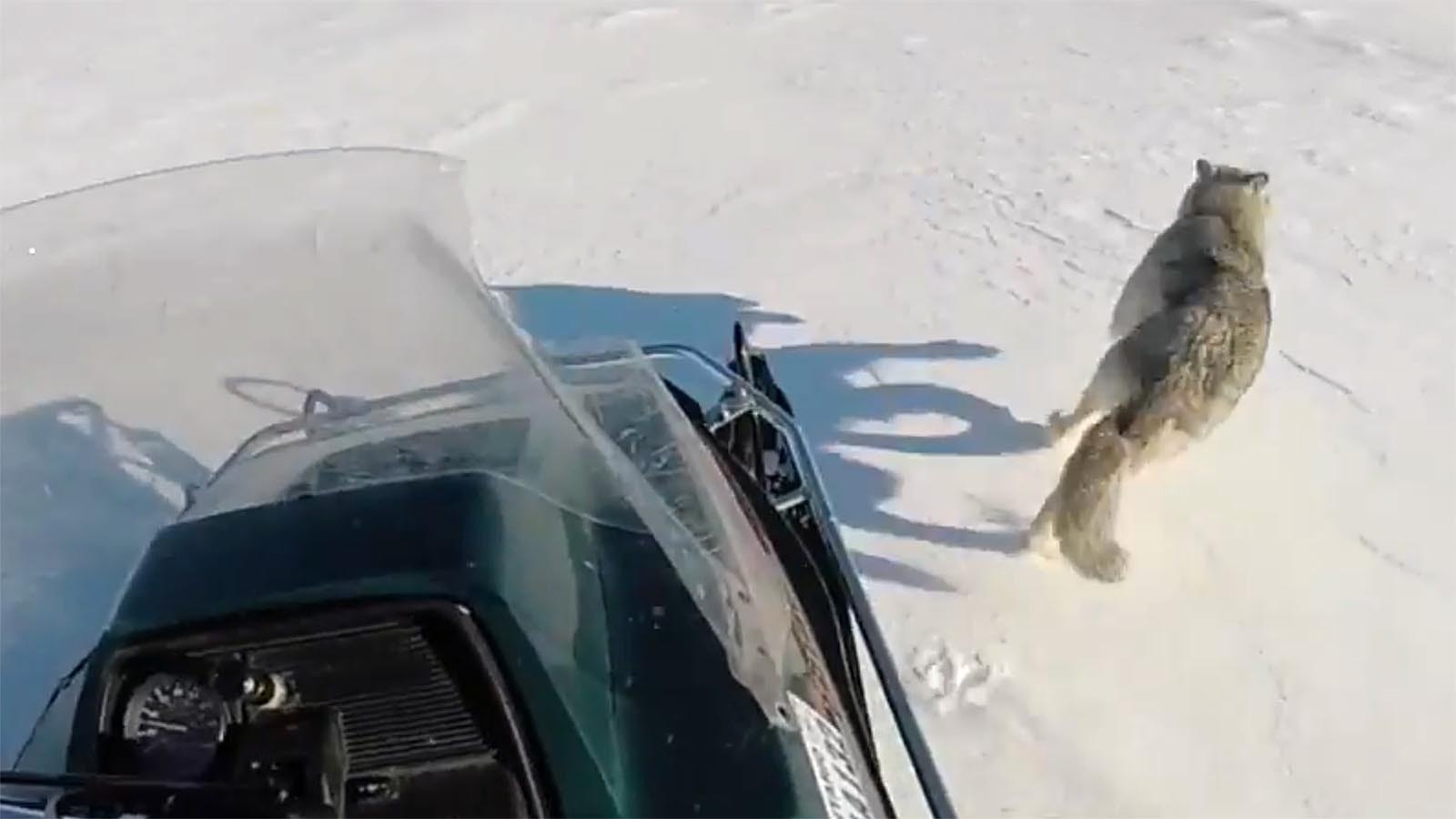Residents of a quiet neighborhood in Green River, Wyoming, are so used to seeing mule deer on their sidewalks and in their driveways and yards that they hardly even notice the critters.
But Axle Nedgo couldn’t help but notice a young buck that showed up at his house this week. It’s got a freaky-looking “club” for an antler on one side of its head, pointing nearly straight down.
The strange growth isn’t a mutation from radioactive contamination, a bizarre disease or anything along those lines. Instead, it’s likely the result of an old injury.
‘Free To A Good Home’
The only thing that bothers Nedgo about the newcomer is that the buck will inevitably add to the annoying piles of deer droppings he has to deal with.
He made a tongue-in-cheek social media post about the buck, including a close-up photo clearly showing its weird antler growth.
“Free to good home, someone get this mutant out of my yard, he keeps shitting everywhere and I’m over it. Lol,” he wrote.
“That was just a joke,” he told Cowboy State Daily.
Nedgo likes the deer, which he said generally don’t cause any trouble — but said he was at least somewhat serious about the droppings.
“I work on my vehicles in my back yard. It’s gravel, and there’s always deer shit there,” he said. “I have to move it out of my way because I don’t want to be laying in deer shit while I’m working on a vehicle.”
‘Rare But Not Unique’
The buck isn’t a mutant, mule deer conservationist Josh Coursey told Cowboy State Daily.
“Clubs” or other weird deformations in deer antlers are usually the result of an injury that causes the antlers to grow abnormally, he said.
Deer shed their antlers each spring and then grow a new set in the summer. Each year’s set is typically larger than the previous set.
There’s no telling how the Green River buck suffered the injury that threw his antler growth out of whack. But shoving matches with another buck is the biggest cause of such injuries, which are rare, said Coursey, who is president and CEO of the Muley Fanatic Foundation
“It’s rare, but not unique. Sparring or wrangling with other deer can contribute to injury, with defects to antler growth,” he said.
Living With Deer
Nedgo said he sees deer on his property “every day,” and they’ve been in town as long as he can remember.
“I’ve been here all of my life, and there’s always been deer in town, so it’s not that special to me,” he said.
He said the deer will let people, including his daughter, get near them, “but they won’t let you pet them.”
They’ve even made peace with his dog, he added.
“The dog and the deer don’t have an issue. The dogs around here will bark at each other, but they don’t tend to bark at the deer,” Nedgo said.
A Laramie urban deer that hangs out in a cemetery doesn’t share that tolerance for canines. Cemetery staff put up signs warning that the doe will attack dogs.
Coursey said he prefers that mule deer stay out in the wild, but accepts that there are resident deer in many Wyoming towns and cities.
“Urban deer are a product of human development and the easy attraction to the artificial oasis of parks, golf courses and landscaped yards,” he said. “Urban deer hold no known fidelity of migration that is learned from mom. This creates residential deer who know no other landscape to occupy. Truly a product of their environment and what they know.”
How well communities tolerate deer roaming about town can vary, he added.
“This has created conflict and appreciation for many municipalities as wildlife is highly revered, until they are not,” he said.
Mark Heinz can be reached at mark@cowboystatedaily.com.





